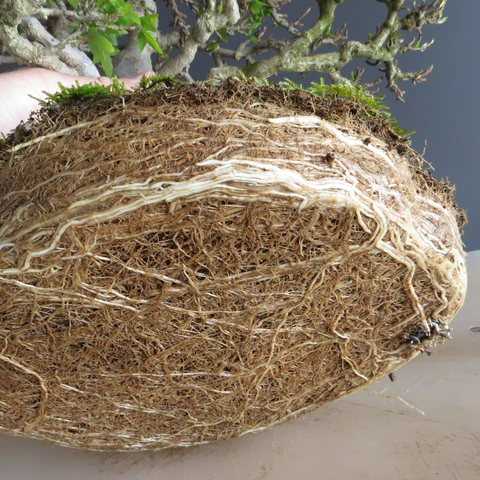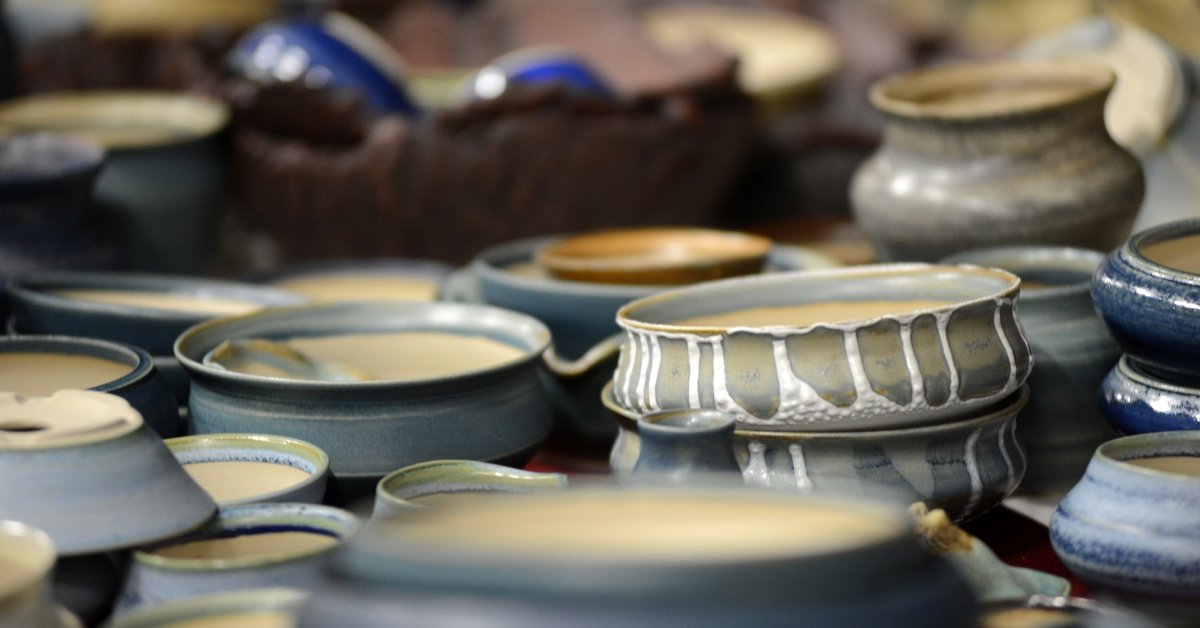If you’re a seasoned bonsai gardener or just starting your journey into the miniature world of these captivating trees, you’ve probably heard about the importance of repotting your bonsai. In this guide, we’ll delve into the when, why, and how of repotting bonsai trees, ensuring that your beloved miniature masterpieces thrive for years to come. So, let’s roll up our sleeves and get our hands dirty with some bonsai wisdom!
Why Repot Bonsai Trees
Before we dive into the nitty-gritty of repotting, let’s explore the why behind this crucial practice. Repotting bonsai trees serves several essential purposes:
Soil Refreshment: Over time, the soil in your bonsai pot breaks down, becoming compacted and depleted of essential nutrients. Repotting allows you to refresh the soil, providing your tree with the nutrients and aeration it needs to flourish.
Root Maintenance: Bonsai trees, like all plants, require healthy root systems. Repotting gives you the opportunity to trim and untangle roots, promoting better growth and overall health.
Pot Size Adjustment: As your bonsai matures, its root system develops, and the tree may outgrow its current pot. Repotting allows you to adjust the pot size, ensuring your bonsai has adequate space for root expansion.
Pest and Disease Control: Regularly inspecting your bonsai’s roots during repotting can help you identify and address any potential pest or disease issues before they become serious problems.
When to Repot Your Bonsai
Timing is everything when it comes to repotting your bonsai. Doing it at the right time ensures the health and longevity of your tree. So, when should you repot your bonsai?
1. Spring or Early Summer
Spring is generally the best time to repot your bonsai, particularly in regions with a temperate climate. This is when your tree is waking up from its winter dormancy and starting to grow vigorously. Repotting at this time allows your bonsai to recover quickly and establish itself in its new pot before the hot summer months.
2. Every Two to Three Years
As a rule of thumb, most bonsai trees benefit from repotting every two to three years. However, the frequency may vary depending on factors like the type of tree, its age, and the type of soil mix used.
Younger bonsai trees tend to grow faster and may need more frequent repotting, while older, more established trees can go longer between repots.
3. Signs It’s Time
Keep an eye out for signs that your bonsai is due for a repot:

Credit: Bonsai Tree ZA
- Slow Growth: If your bonsai’s growth has significantly slowed, it might be root-bound and in need of more space for its roots to spread.
- Water Not Absorbing: When you water your bonsai, and the water runs straight through without being absorbed, it’s a sign that the root system is too dense.
- Exposed Roots: If you notice roots growing out of the drainage holes or above the soil surface, your bonsai is definitely ready for repotting.
- Soil Depletion: Over time, the soil in your bonsai pot can become depleted of nutrients, which can hinder your tree’s health and growth.

Choosing the Best Bonsai Pot for Your Bonsai Tree
Dive into our guide for expert tips on size, shape, and colour for your bonsai pot selection. Find the perfect container for your miniature masterpiece.
How to Repot Your Bonsai: A Step-by-Step Guide
Now that you understand the importance of repotting let’s dive into the nitty-gritty of how to do it properly. Follow these steps, and your bonsai tree will thank you with healthy, vibrant growth.
Step 1: Gather your supplies
Before you start repotting, make sure you have all the necessary tools and materials ready:
- New bonsai pot
- Fresh bonsai substrate (appropriate for your tree species)
- Pruning shears or root cutters
- A chopstick or bamboo skewer for root work
- A drainage mesh or screen
- Wire (optional, for securing the tree in the pot)
Step 2: Prepare your workspace
Repotting can get messy, so set up your workspace outdoors or in an area that’s easy to clean. Lay down a plastic sheet or tarp to catch soil and debris.
Step 3: Remove the bonsai from its pot
Gently remove the bonsai from its current pot. To do this, slip a chopstick or bamboo skewer around the inner edge of the pot, loosening the soil from the sides. Be patient and avoid damaging the roots.
Step 4: Inspect the roots
Carefully inspect the root system. Look for any dead or diseased roots, and trim them with your root cutters. Use the chopstick to untangle and loosen the roots. Don’t be afraid to trim healthy roots as well, as this encourages new growth.
Step 5: Prepare the new pot
Place a layer of drainage mesh or screen over the drainage holes in the new pot. This prevents soil from washing out while allowing excess water to escape.
Step 6: Add soil to the pot
Add a layer of fresh bonsai soil mix to the bottom of the new pot. The depth of this layer should be sufficient to accommodate the roots without crowding.
Step 7: Position the bonsai
Position your bonsai in the new pot, making sure it’s centred and at the desired height. If needed, secure the tree with wire by threading it through the drainage holes and twisting it at the base of the trunk.

Step 8: Fill with soil
Carefully fill the pot with your new substrate, working it around the roots to ensure there are no air pockets. Use the chopstick to help settle the soil and ensure it’s evenly distributed.
Step 9: Water thoroughly
After repotting, give your bonsai a thorough watering. This helps settle the soil and ensures good contact between the roots and the new soil mix. Make sure the water drains freely from the pot.
Step 10: Post-repot care
Place your newly repotted bonsai in a shaded or sheltered area for a few weeks to help it recover from the stress of repotting. During this time, be mindful of your watering routine and avoid feeding until you see signs of new growth.
Step 11: Regular maintenance
Continue to monitor your bonsai’s growth and health after repotting. As the growing season progresses, you can resume your regular care routine, including fertilising and shaping.
Common Mistakes to Avoid
While repotting bonsai trees may seem straightforward, there are some common mistakes to watch out for:
- Choosing the Wrong Substrate: Using the wrong soil mix can lead to poor drainage or inadequate aeration. Be sure to select a bonsai-specific soil mix suitable for your tree species. You can also create your own and discover the optimal ratio of components for your tree.
- Repotting Too Often: Avoid repotting your bonsai too frequently, as this can stress the tree. Stick to the recommended repotting intervals for your tree’s age and species.
- Trimming Roots Too Aggressively: While it’s essential to trim roots during repotting, cutting too much can harm the tree. Be conservative and only remove what’s necessary.
- Improper Pot Size: Select a pot that provides enough room for root growth without being excessively large. An oversized pot can lead to water retention issues. The general rule of thumb is that the length of your pot should be 1/3 of the height of your tree, however this can differ depending on the depth of the pot.
- Ignoring Aftercare: After repotting, closely monitor your bonsai’s health and adjust care as needed. Neglecting it during the recovery phase can result in setbacks.

Credit: Sybotanica
Repotting bonsai trees is an essential practice that ensures the long-term health and vitality of your miniature masterpieces. Understanding when and why to repot, along with mastering the repotting process, will help your bonsai thrive for years to come. So, embrace the art of repotting, and watch your bonsai flourish as you nurture them through each stage of their growth. Happy repotting!
Are you new to Bonsai?
The art of Bonsai has developed over thousands of years with masters from across the world creating magnificent trees. There is no need to be intimidated as you can learn whilst growing your very own Bonsai tree that can live with you for the rest of your life. Transform your home or urban garden with a living piece of art. Get started today!
Would you like to join the Yugen Community and receive our seasonal newsletters, including top tips and news from the Bonsai world?
Don’t forget the exclusive discounts and offers!
Enter your email address below and you will also receive a coupon code to redeem free delivery on your first order.
SHOP BONSAI
Visit our shop to browse our selection of classic seeds for bonsai, specialist tools, pots and starter kits to begin your journey. Take up the therapeutic hobby of Bonsai and experience the many benefits of honing this skill, all whilst adding a beautiful piece of nature to your home.
